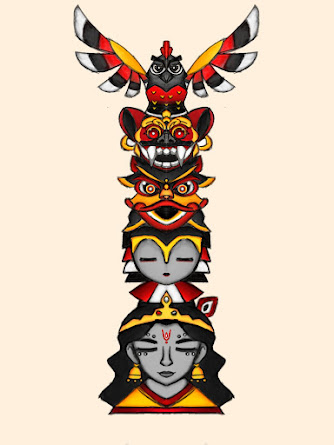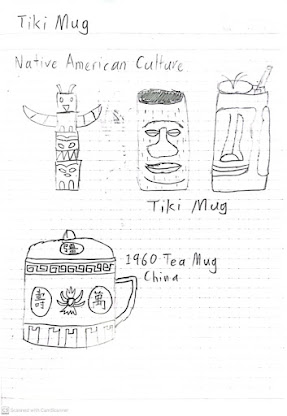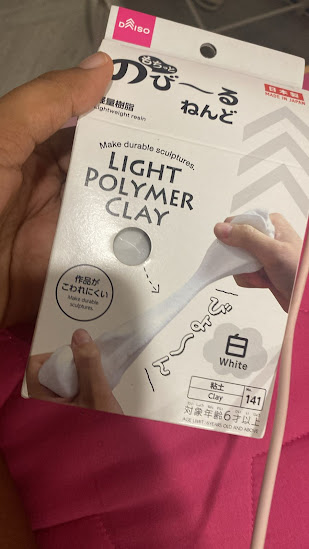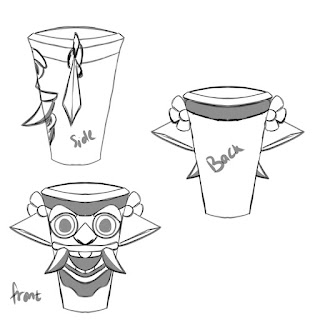2/5/2024 - 29/5/2024 / Week 01 - Week 07
Dow Jia Zheng - 0354184 / 040604-14-1581
Intercultural Design / Bachelors of Design in Creative Media / Taylors
Lakeside Campus
Project 1 / Continuous Assessment 30% - Group
INSTRUCTIONS
Module Synopsis
This module provides students with the opportunity to understand the role
of design and the designer in a wider cultural, political and social
context. It aims to introduce students to local and/or global design and
design issues through engagement with outside agencies, groups or
cultures, which may present opportunities for collaboration. The module
facilitates the direct interaction with major designers, illustrators,
artists, external agencies, fellow students from design education
institutions in other cultures.
Project Week 1 & 2
Cultural Sensivity
by Dow Jia Zheng
Fig 1.1 Native American PPT
The PPT I did is on the Native American People and theirs culture where in
this canva slide that I done is the compilation of the research that I have
done with other teammate.
The reason on why I choose the Native American for my Intercultural Research
is because it is one of the most interesting culture that came to my mind at
the time.
The research that I done reveal that the Native American civilizations
thrived across the American continent with a vibrant tapestry of culture.
From the complex agricultural societies of the Pueblo people in the
Southwest to the sophisticated mound-building cultures in the East, these
diverse communities held unique languages, traditions, and governance
systems, before the arrival of the Europeans setting their foot on
continent.
The Native American Religion Belief and tradition encompass a diverse array
where practices and features of material culture as the religious of this
kind are so highly localized, it impossible to determine exactly hoy many
exist in North America now or may have existed in the past.
The clothing that Native American wore a variety of different types of
clothes:
- Leather Leggings
- Cloth Clothes
- Anuks
- Maccasins.
The traditional way of life for the Native American that their practiced is
diverse and sustainable where it is adapted to their specific environments.
Where as the key aspects of their culture that can be broken into two part
that is Subsistence and Culture Practices:
Subsistence:
-
Hunting & Fishing; according to ethical principle and respect
for nature.
-
Gathering; where women gather plants, nuts, berries and roots for
dietary diversity and also knowledge of medicine herbs.
-
Agriculture; that is sophisticated where it practices
cultivating crops like corn, beans and squash using techniques like crop
rotation and also irrigation.
Culture:
-
Storytelling; oral traditions passed down knowledge, history and
values through myths, legends and also personal narratives.
-
Dance; that expressed in ritual cultural identity, celebrated
life events and connected with spirit world.
-
Music; where singing and drumming played in ceremonies, social
gathering as well as storytelling.
-
Arts & Crafts; such as intricate beadwork, pottery, woven
baskets and wood carvings where each creation held cultural
significance.
Sketches Idea and References Image
Fig 1.1 China Huabio Stone Statue
Fig 1.2 Sketches from China Huabio Stone Totem
Fig 1.4 Krishna Illustration (Narrah)
Fig 1.5 Niipon Wood Craft (Kaho)
Fig 1.6 Black Parrot (Clara)
Fig 1.8 Five Blessing Symbol from Chinese Culture sketches
Fig 1.9 Chinese mask & Feng Shui coins bracelet sketches
Fig 1.10 Totem Inspiration (Group Idea)
The Totem :
The practice of is crafting and carving totemism is not only unique to
the Native American culture, but is an intrigue system of belief found
in many cultures around the world.
Fig 1.11 Final Result Totem Proposal
This is the final design for our proposal that our group brainstorm
where one of us design and draw it out.
Project Week 3
Fig 2.1 Video Presentation (Proposal)
Intercultural Design Proposal Presentation: Native American
by Dow Jia Zheng
After we finally decided and created the design for our PPT proposal about
the culture where each of us is gonna explain. Where each of our individual
member record our presentation audio, then send it to one of our member that
is our group leader to edit it along matched with with the PowerPoint to
create a form of video presentation.
Project Week 4
After the submission is done where than we waited from our lecturer
feedback while our group move on to try discussing for the next the next
project work to work on.
In the discussion our group is deciding on which product we will be focus
to create for the prototype where soon our group decided on between going
with the mask, totem and tiki cup where we voted on. The result where that
we all agreed upon using Tiki cup as a represent our culture as the
prototype.
This are the sketches that I and other member have created from idea of
the tiki cup.
Fig 3.1 Sketches done by me
Fig 3.2 Sketches done by me
Fig 3.3 Sketch by Fion
Fig 3.4 Sketch by Fion
These are all early design idea that we played with in our head to
experiment to combine different culture aesthetic and idea together.
Project Week 5
Several days passes where our lecturer decided that the topic of the
culture we should focus on was about Balinese People culture. Which
meaning we still going with the tiki mug idea, but combined with Balinese
culture.
The justification design reason for the Tikki Cup given by one of our
group member to gain our lecturer approval:
" Our decision to select the Tiki cup as the canvas for our design
endeavors stems from a deep-rooted desire to celebrate and promote
Balinese culture. By infusing this traditional vessel with Balinese
cultural elements, we aim to ignite a sense of curiosity and
appreciation among consumers, ultimately fostering a greater awareness
and understanding of this rich heritage.
The Tiki cup, with its distinctive shape and cultural connotations,
serves as the perfect medium for our creative expression. Its
association with tropical themes and exoticism aligns seamlessly with
the vibrant tapestry of Balinese culture, offering a captivating
platform to showcase its intricate nuances.
Through meticulous craftsmanship, we intend to adorn the Tiki cup with
symbols, motifs, and imagery that are emblematic of Balinese traditions.
From intricate patterns inspired by Batik textiles to depictions of
mythological figures like Barong and Rangda, each element will serve as
a gateway to explore the depth and diversity of Balinese heritage.
Moreover, by incorporating these cultural references into a commonplace
object like a drinking vessel, we aim to democratize access to Balinese
culture, transcending geographical boundaries and cultural barriers.
This approach not only fosters a sense of inclusivity but also empowers
individuals to engage with and appreciate cultural diversity in their
everyday lives.
Furthermore, our design approach is rooted in sustainability and ethical
sourcing practices. By collaborating with local artisans and utilizing
eco-friendly materials, we not only honor the craftsmanship synonymous
with Balinese culture but also contribute to the preservation of the
environment and local communities.
In essence, our choice to utilize the Tiki cup as a canvas for Balinese
cultural expression is driven by a commitment to education, cultural
exchange, and sustainable design principles. By creating an
aesthetically compelling product imbued with cultural significance, we
hope to spark conversations, evoke emotions, and ultimately inspire a
deeper appreciation for the beauty and complexity of Balinese heritage.
"
After gaining approval from our lecturer, where our leader decide we can
proceed with Tikki Cup Idea also instruct us to do more research about
Balinese culture to understand the culture ourselves as well and share
some interesting facts to each other. One of our group also decide to
visit any art gallery or museums that showcase Bali artifacts as a part
of research.
Where after a while one of our member return and told us:
" There is currently no museum dedicated solely to Indonesia in the
Klang Valley. However, there are several museums that house collections
of Indonesian artifacts or feature exhibitions on Indonesian culture and
history. "
Where as follow are the Islamic Arts Museum Malaysia, National Museum
and Selangor State Museum that houses a collection of artifacts.
"It's difficult to definitively say which of the museums mentioned above
has Balinese-related artifacts in their permanent collections. However,
based on the information available online, the Islamic Arts Museum
Malaysia is the most likely to have artifacts from Bali. This is because
the museum's collection spans the Islamic world, including Southeast
Asia, and Bali has a significant Hindu population. While the museum
doesn't explicitly mention Balinese artifacts on its website, it's
possible that some items from Bali, such as textiles or metalwork with
Hindu influences, might be part of the collection."
As the group continue brainstorming and then decide to do research
separately also providing each of our sketches prototype about tikki cup
that is combine with Balinese culture.
Fig 4.1 (a) Tiki Cup idea by Kaho
Fig 4.1 (b) Kaho part using Wayang as inspiration
Fig 4.2 (a) Tiki Cup idea by Fion
Fig 4.2 (b) Fion part using any Bali elements as inspiration
Fig 4.3 Tiki cup idea by Narrah and using any bali elements as
inspiration
Fig 4.4 (a) Tiki Cup idea by Berlian
Fig 4.5 (b) Berlian part using any bali elements as inspiration
Fig 4.6 (a) My sketches inspire from the bali culture elements
Fig 4.6 (b) My sketches inspire from the bali culture elements
We created a short PowerPoint to show our lecturer about the prototype
and the research our group done for this week.
Tiki
by CLARA BERNARDETTE LEPATHY LEPATHY
There where a last changes made to the PowerPoint where our group
remove some info about balinese. As the focus was on the "Tiki
Culture" now and the research had nothing to do with our topic which
is too much or overbroad. We also switch back to original plan which
is combine all of our culture to tikki cup.
Another idea that one of our group member propose on what are
we going to do with our tiki cup prototype design.
Fig 4.7 Rainbow Tiki Cup reference
These rainbow color tiki cup is inspiration for us to put in our tiki cup prototype design base each of our culture to represent.
Project Week 6
This week our group planned to buy the materials that was needed to
create Tiki Cup prototype, starting with the size we decided for
the cup, buying a clay and acrylic paint.

Fig 5.1 Cup size
Fig 5.2 Light polymer clay
5.3 Acrylic Paint
The plan was to wrap the plastic cup using the clay and then paint it. So
these are some of the prototype design that each of group create.
Fig 5.4 (a) Tiki cup design by Berlian
Fig 5.4 (b) Tiki cup sketch by Berlian
Fig 5.5 (a) Tiki cup design by Fion
Fig 5.5 (b) Tiki cup sketch by Fion
Fig 5.6 Tiki cup sketch by Kaho
Fig 5.7 Tiki cup design by Narrah
Fig 5.8 Tiki cup design by Me
Fig 5.9 Mini Prototype
Fig 5.10 Credit to Narrah
Fig 5.11 Credit to Fion
Fig 5.12 Credit to Berlian
Fig 5.14 Credit by Me
From the sketches we created up to now, we proceed to make mini version of the tiki cup design prototype shown in Fig 5.9 using polymer clay. After that some of us continue to test and create with the clay, while other proceed focusing with the final design prototype.
Well although it was going smoothly at the beginning, but a problem did arise where we needed to change leadership and deadline approaching where we each cooperated and also kick into full drive in the group.
With the data collection, we use secondary research methods to gather data where each members choose to assign for information to efficiently gathering data.
Fig 6.1 Data Collection
Fig 6.2 Tiki Cup by Group 36
Fig 6.3 Tiki Cup size to used
Fig 6.4 (a) Final Tiki Cup design by Narrah
Fig 6.4 (b) Final Tiki Cup design by Kaho
Fig 6.4 (c) Final Tiki Cup design by Berlian & Dow
Fig 6.4 (d) Final Tiki Cup design Vote
This design where we try to combined by making the sketches first and after that we set up a vote for which one is best final design to be used as the final Tiki Cup product. After the voting, where it concluded numbers 3 is the best design choices to be used as a Final Tiki Cup design.
Where a little color changes were done to create more motives and provides more colors in order to create a very nice design.
Fig 7.1 Final Tiki Cup Modification Sketch by Fion
Fig 7.2 Progress Prototype of Tiki Cup
Fig 7.3 Latest Progression of Tiki Cup
Fig 7.4 Final Tiki Cup Design Product
Group 36 - Tiki Culture Final Presentation (Backup)
by Fion
Reflection
Throughout the process of doing this project, our group was able do each task that where given to them well and on time also doing many research on the various culture including other thing of interest that prove to be useful. Not only that each of group member have various great experience and skills that is brough on to the table, which was great thing that give us head start on what we want to do. But the only problem that group have was communication between each other and addition of clear and direct explanation did cause confuses among the group. Well in the end it all manage to work out, where what I have learned that clear and direct communication between group member is essential other than that it was great experience to be working with the team member I am with in doing this project.





















































Comments
Post a Comment